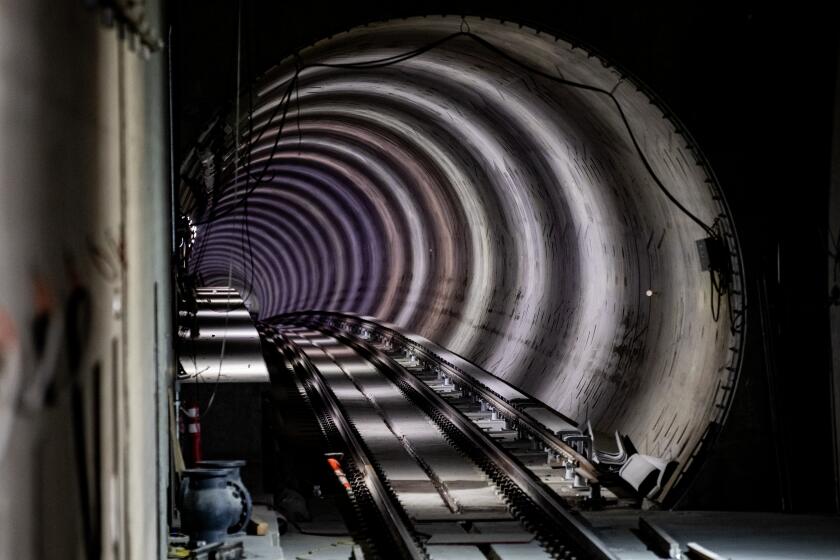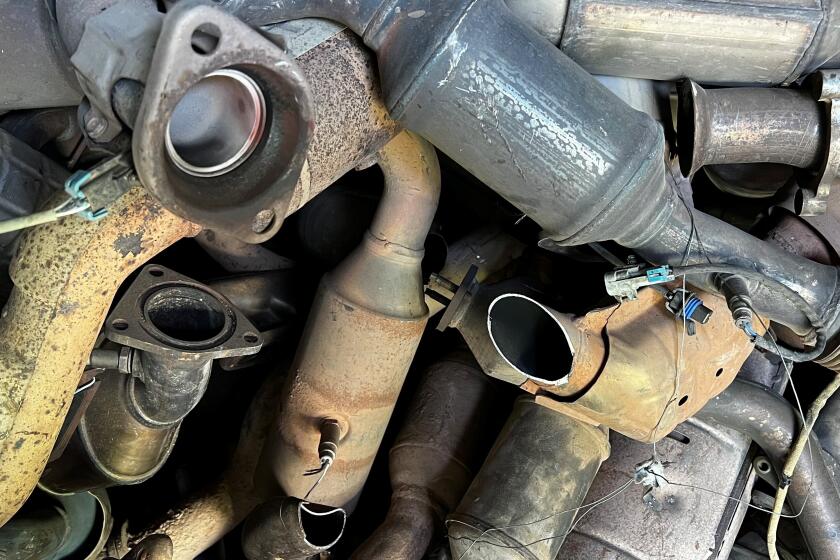The Right Way to Go About Transit : Smart $500-million deal gives the public access to hundreds of miles of Santa Fe track
- Share via
Gather officials of five counties and representatives of a powerful business force around a bargaining table and what can you expect? Usually stalemate, given the often competing interests of the public and private sectors. True to form, that’s what happened for years as transportation officials from Los Angeles, San Diego, Orange, Riverside and San Bernardino counties knocked heads with Santa Fe Railway over the proposed purchase of 336 miles of track.
At one point, the dispute was so contentious that transit officials accused Santa Fe of trying to pull off “a train robbery in reverse.” But an extraordinary compromise announced this month demonstrates that even the toughest bargaining can produce winners--if good faith remains on the table.
Certainly, everyone was a winner in this one. The $500-million deal gives the public access to hundreds of miles of track owned by the railway since the 1880s. That right of way will be used to dramatically increase commuter rail service throughout Southern California. New commuter rail lines will be established between Los Angeles, Orange and Riverside counties; a new line will link Orange and Riverside counties, and San Diego is finally free to proceed with long-sought commuter rail service to Oceanside.
Light-rail projects also will get a boost, with the Blue Line trolley extending from Los Angeles’ Union Station to Pasadena and a similar line stretching from Oceanside to Escondido in San Diego County. By 2010, this web of convenient rail lines is expected to lure tens of thousands of commuters off Southern California freeways every day. That translates into less traffic congestion and air pollution in a five-county region choked by both.
Santa Fe comes away with $500 million and a promise by transit officials to forgive roughly $50 million in loans made to the railway years ago to upgrade the tracks between Los Angeles and San Diego. That’s a fair compromise between transit officials’ original bid of $300 million and the railway’s initial asking price of $800 million.
These complex negotiations easily could have collapsed under the weight of bureaucratic bickering and private-sector intransigence. But to the credit of all the parties, that wasn’t allowed to happen.
Instead, bare-knuckle bargaining blossomed into a creative effort that ultimately produced more rail projects than even were on the table in the beginning. For that, everyone involved deserves congratulations.
More to Read
Sign up for Essential California
The most important California stories and recommendations in your inbox every morning.
You may occasionally receive promotional content from the Los Angeles Times.










